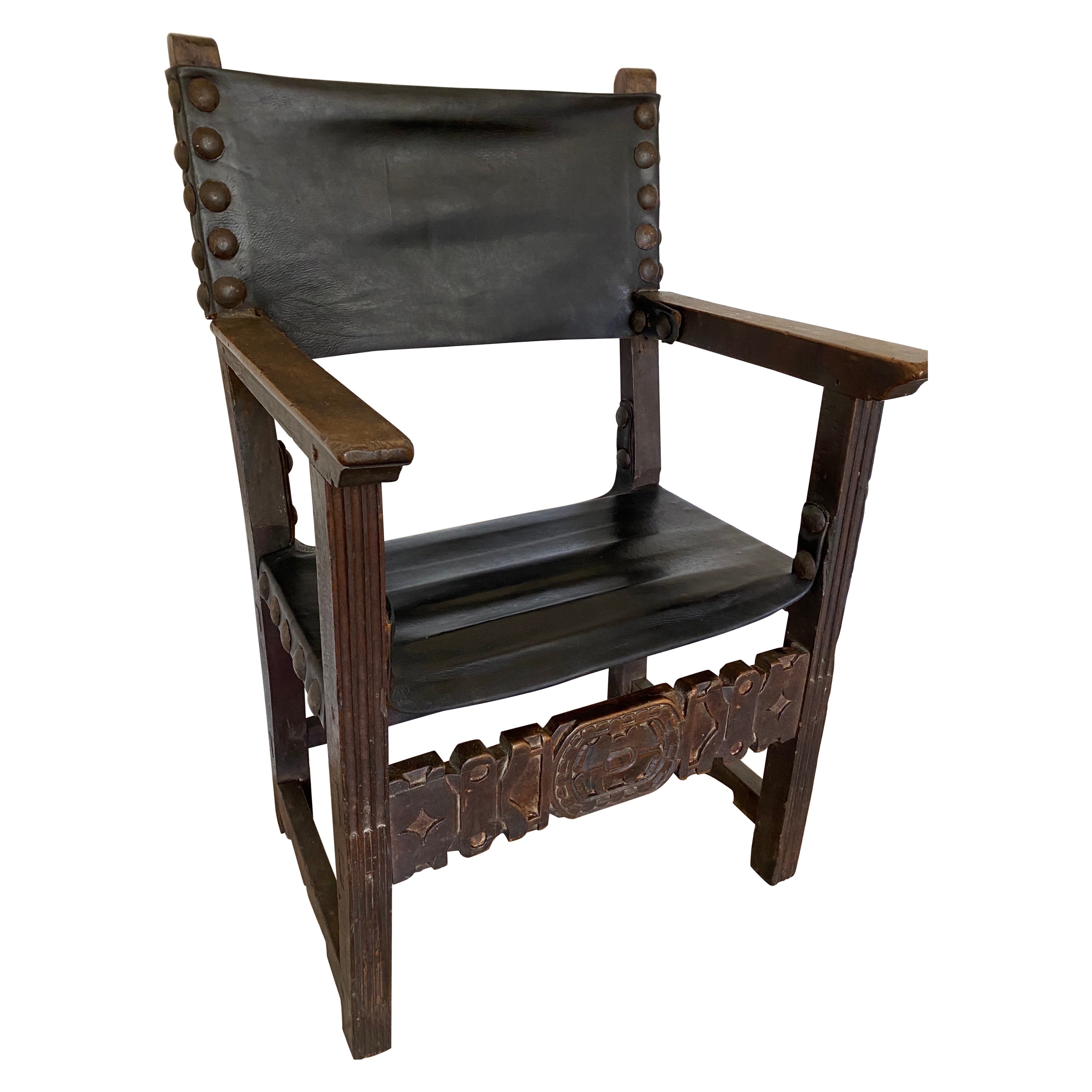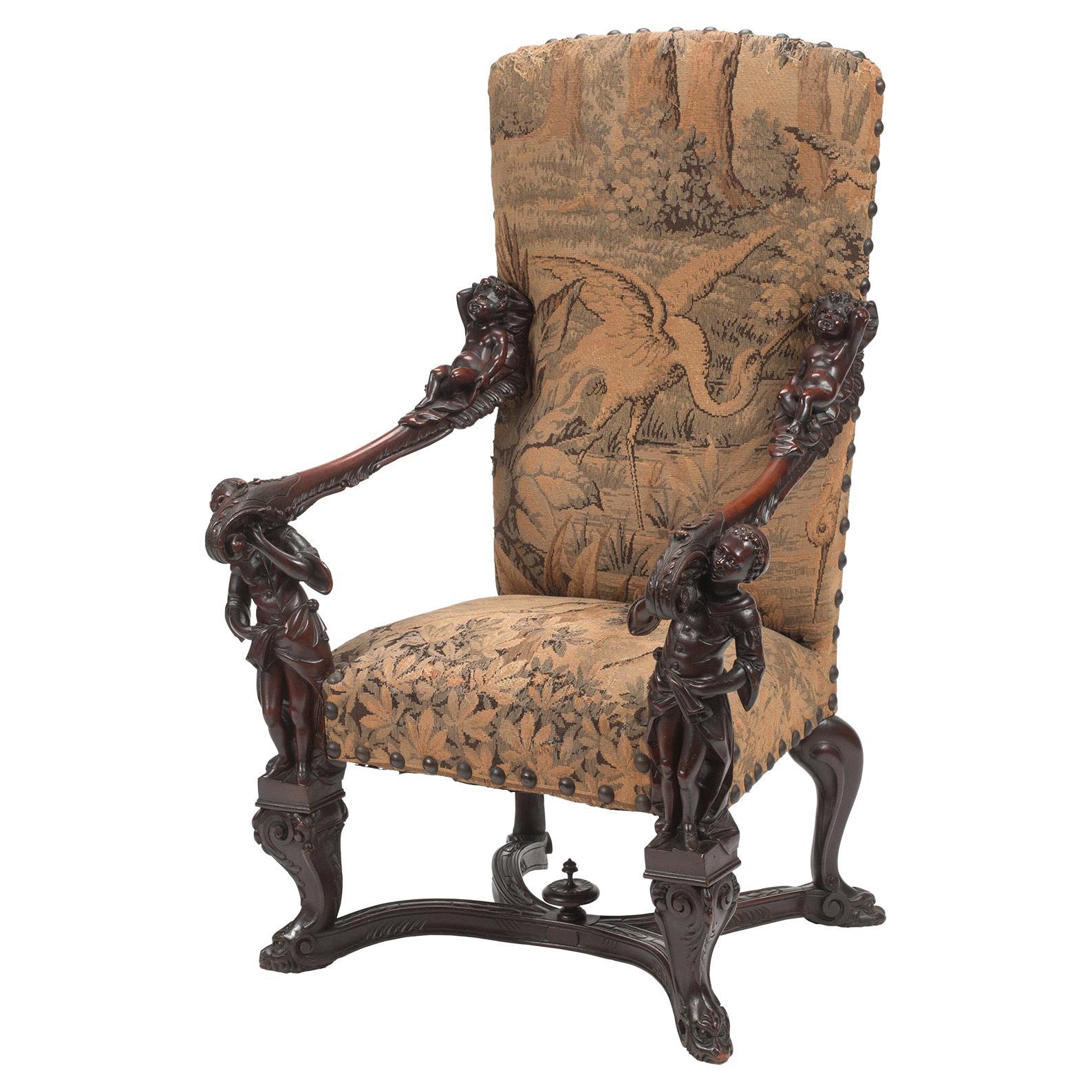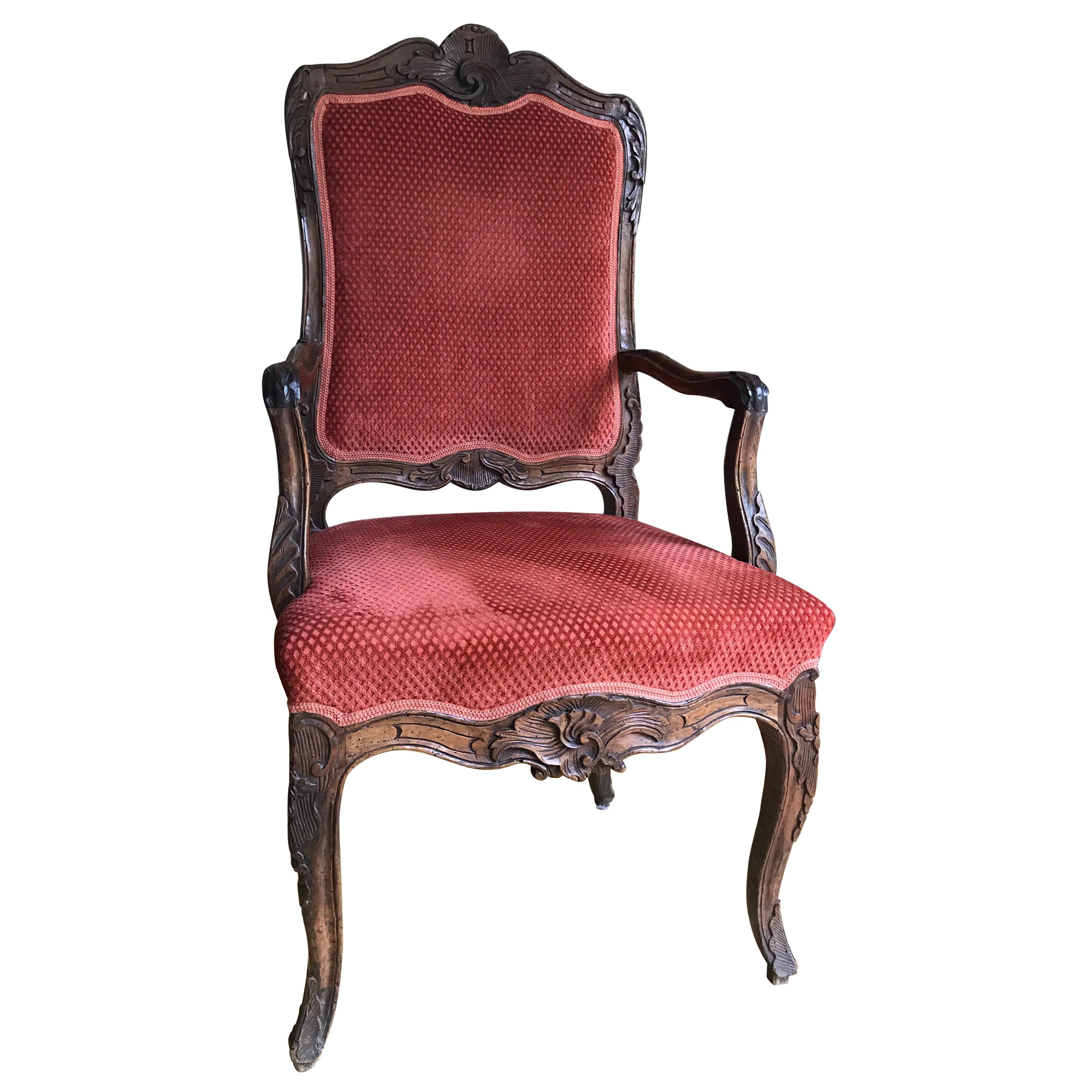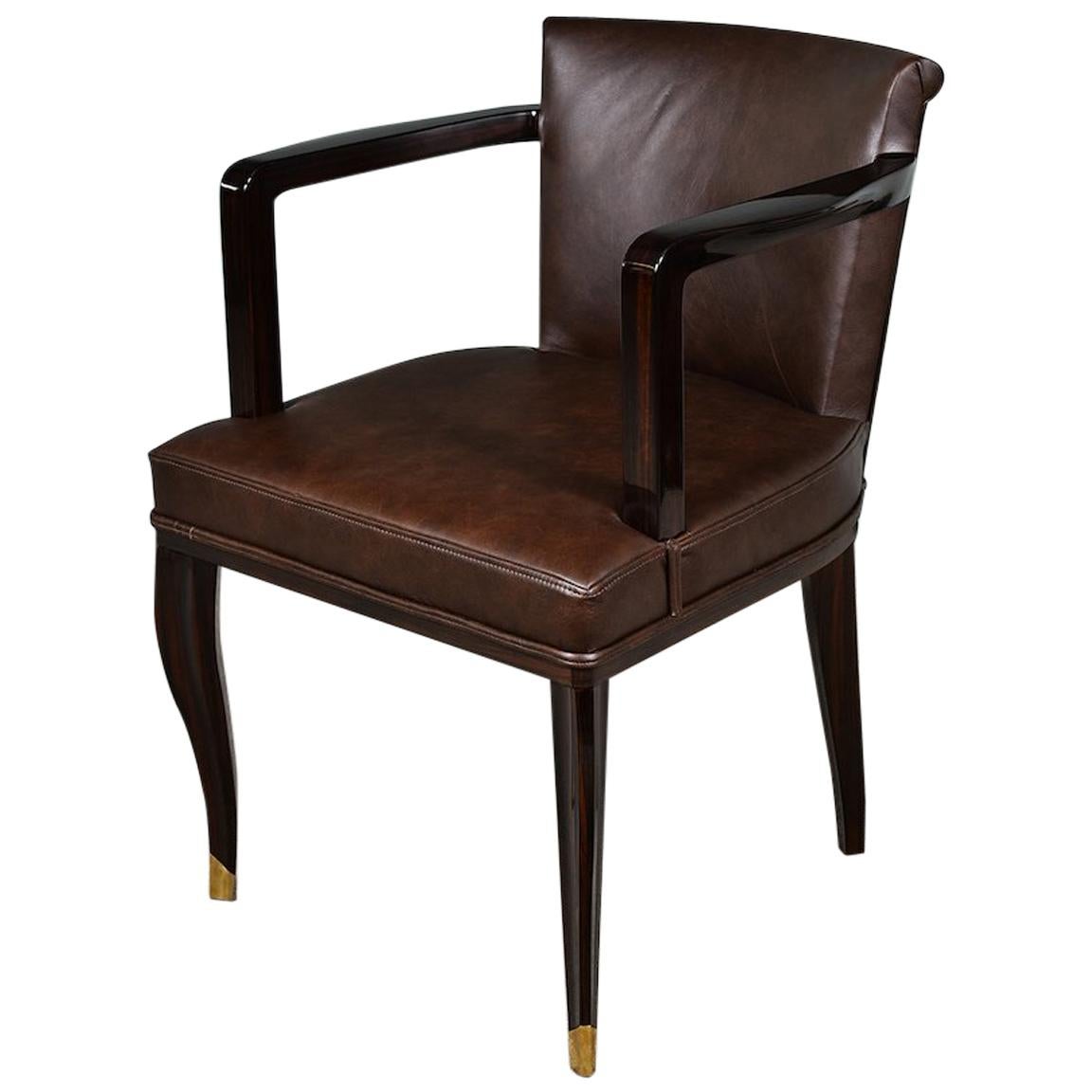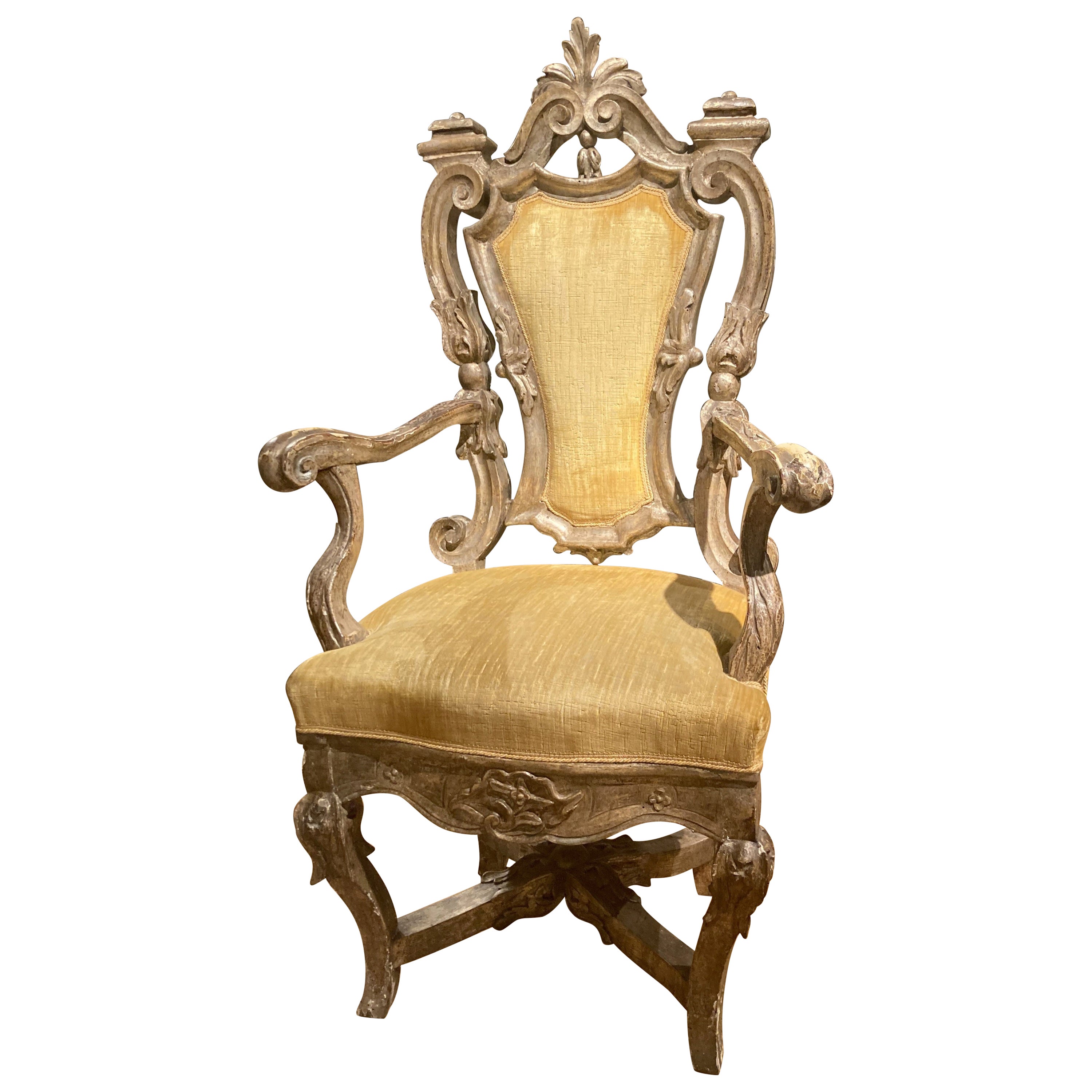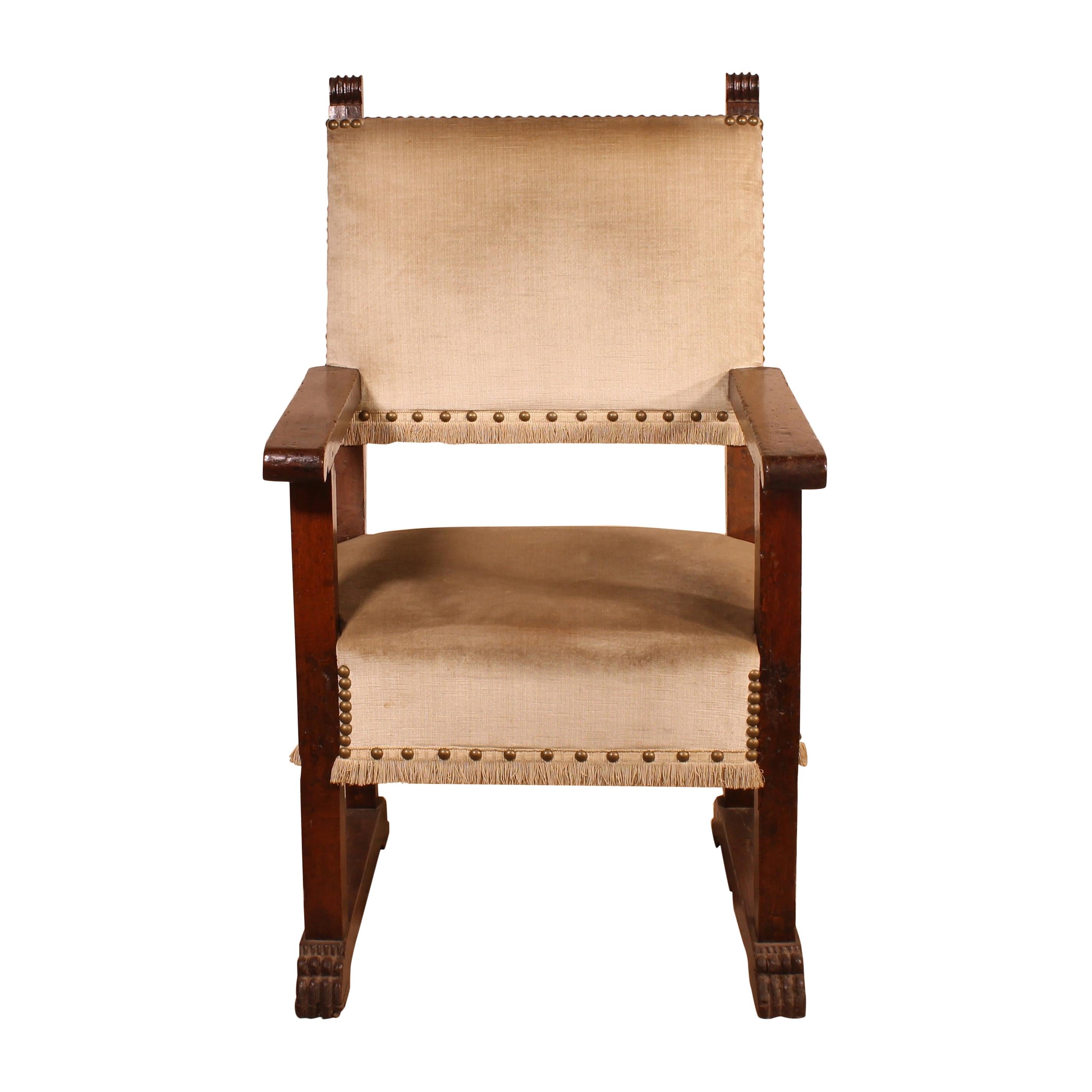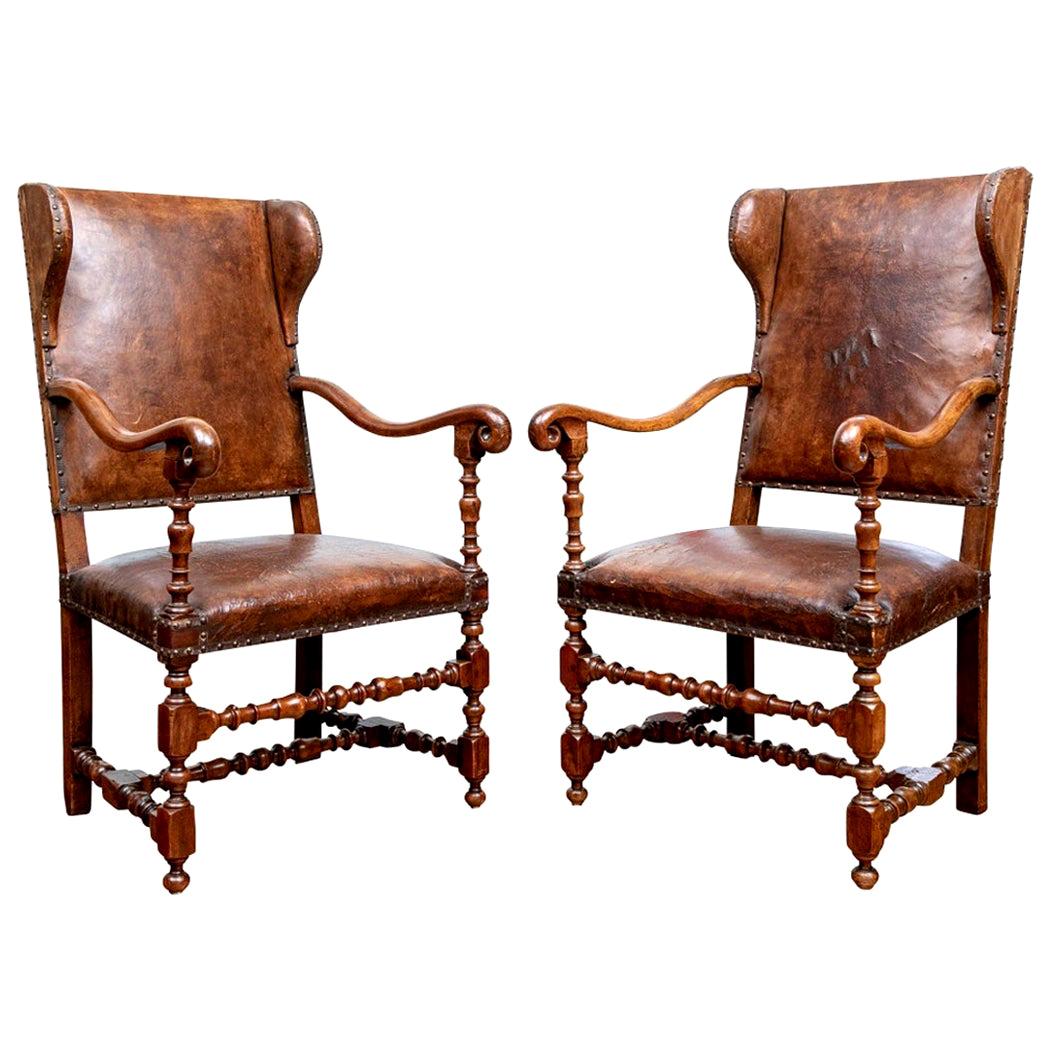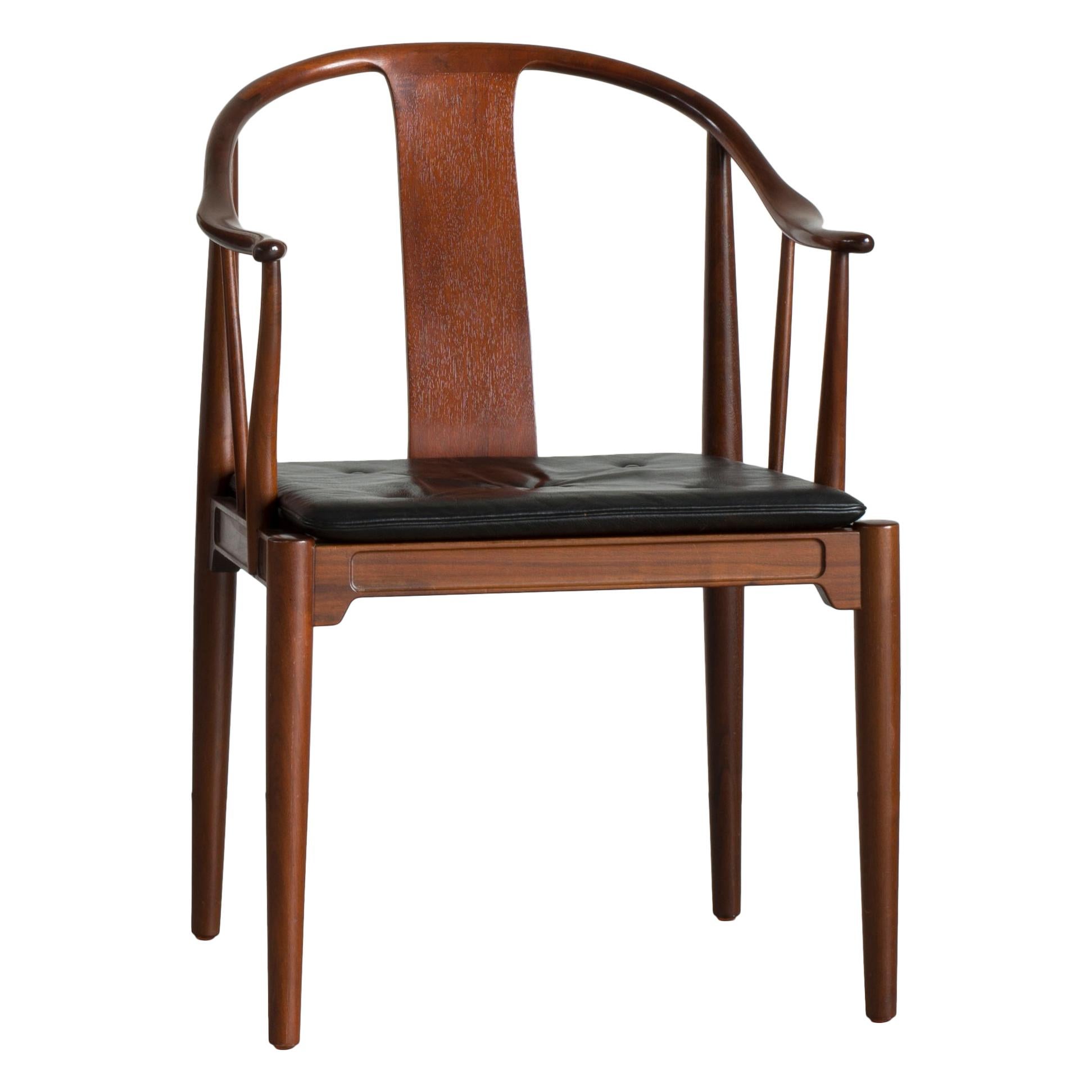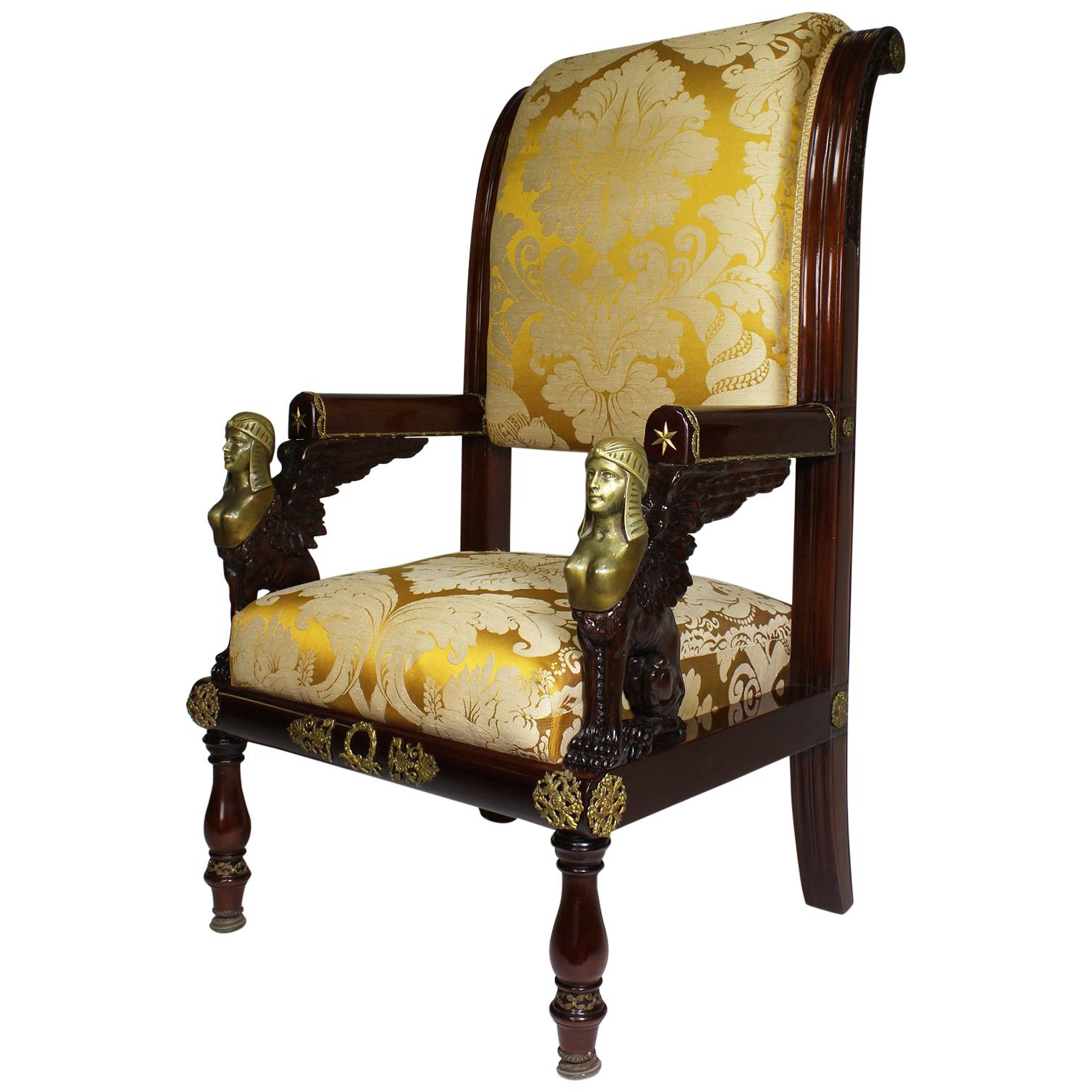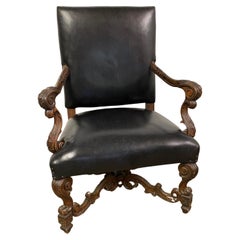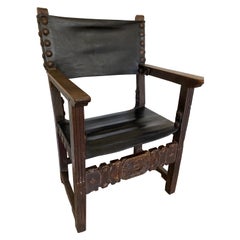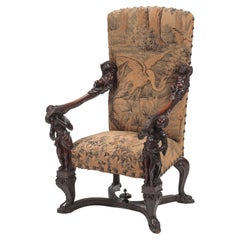
Throne Chair In Walnut
View Similar Items
1 of 3
Throne Chair In Walnut
About the Item
- Dimensions:Height: 47 in (119.38 cm)Width: 25 in (63.5 cm)Depth: 25 in (63.5 cm)
- Materials and Techniques:
- Place of Origin:
- Period:
- Date of Manufacture:1920's
- Condition:great.
- Seller Location:Santa Rosa, CA
- Reference Number:Seller: N/A0000077491stDibs: U10071279734344
You May Also Like
- 19th Century Italian Baroque Carved Walnut Throne ChairLocated in Sheffield, MAA richly carved walnut Italian throne chair. This arm chair could make a wonderful statement in any room. Use it for a desk chair, next to a fireplace, an office or in the living roo...Category
Antique 19th Century European Baroque Armchairs
MaterialsLeather, Walnut
- Antique Spanish Renaissance Style Throne Arm ChairLocated in Sheffield, MAThis Spanish walnut throne chair with a large wide seat made circa 1700. Made from well carved but simply done walnut the chair is centered on a leather covered seat and back with large antique nail heads...Category
Antique 17th Century Spanish Renaissance Office Chairs and Desk Chairs
MaterialsLeather, Wood
- In Manner of Andrea Brustolon Venetian 19th Century Carved Walnut Figural ThroneBy Valentino Panciera BesarelLocated in Los Angeles, CAA fine Italian 19th century baroque revival style carved walnut figural throne armchair, attributed to Valentino Panciera Besarel (Venice, 1829-1902) in the manner of Andrea Brustolo...Category
Antique Late 19th Century Italian Baroque Revival Armchairs
MaterialsTapestry, Walnut
$12,500 Sale Price32% Off - Sicilian Sculpted Armchair Baroque Rococo Italy Throne Shell Walnut Linen VelvetLocated in Ettlingen, DEAuthentic Southern Italian, Sicilian throne, as it has been traditionally used in the large rural estates for the padrone, for the noble chief. Seating height would be perfect for a modern writing desk. The seating upholstery is quite firm, giving a good support. The carvings depicting the rising sun on top, the sea, and acanthus for a long life. The armchair can be dated around 1715. Carefully restored. All the carvings are complete, and fully original. Upholstered with an exclusive linen velvet by Maison Charles Burger...Category
Antique Early 18th Century Italian Baroque Armchairs
MaterialsLinen, Walnut
$3,075 Sale Price30% Off - Art Deco Hungarian Office Chair in WalnutLocated in Houston, TXArt Deco Hungarian office chair in walnut Office chair is done in a fine walnut wood, newly re-upholstered in brown leather. It has 2 armrests and elevated by the 4 elongated wooden...Category
Vintage 1930s Hungarian Art Deco Armchairs
MaterialsWalnut
- Pair of Palatial Venetian Walnut Carved Mid-19th Century Baroque Figural ThronesBy Valentino BesarelLocated in Los Angeles, CAA very fine pair of palatial Venetian walnut carved mid-19th century Baroque figural throne armchairs, attributed to Valentino Panciera Besarel (Venice, 1829-1902) in the manner of Andrea Brustolon (1662-1732). The ornately carved thrones, each flanked with figures of standing males supporting a branch-carved armrests with vines. Raised on cabriolet scrolled legs. Provenance: The Castello di Giove in Umbria, Italy, circa 1870-1880. Height: 54 1/4 inches (137.8 cm.) Width: 37 1/4 inches (94.6 cm.) Depth: 32 inches (81.3 cm.) Andrea Brustolon (20 July 1662 – 25 October 1732) was an Italian sculptor in wood. He is known for his furnishings in the Baroque style and devotional sculptures. Biography He was trained in a vigorous local tradition of sculpture in his native Belluno, in the Venetian terraferma, and in the studio of the Genoese sculptor Filippo Parodi, who was carrying out commissions at Padua and at Venice (1677). He spent the years 1678-80 at Rome, where the High Baroque sculpture of Bernini and his contemporaries polished his style. Apart from that, the first phase of Brustolon's working career was spent in Venice, 1680–1685. Brustolon is documented at several Venetian churches where he executed decorative carving in such profusion that he must have quickly assembled a large studio of assistants. As with his contemporary in London, Grinling Gibbons almost all the high quality robust Baroque carving in Venice has been attributed to Brustolon at one time or another. In the Venetian Ghetto, at the Scola Levantina, Brustolon provided the woodwork for the synagogue on the piano nobile, where the carved, canopied bimah is supported on Solomonic columns, which Brustolon had seen in Bernini's baldacchino in the Basilica of St Peter's. His furniture included armchairs with figural sculptures that take the place of front legs and armrest supports, inspired by his experience of Bernini's Cathedra Petri. The gueridon, a tall stand for a candelabrum, offered Brustolon unhampered possibilities for variations of the idea of a caryatid or atlas: the familiar Baroque painted and ebonized figural gueridons, endlessly reproduced since the eighteenth century, found their models in Brustolon's work. His secular commissions from Pietro Venier, of the Venier di San Vio family (a suite of forty sculptural pieces that can be seen in the Sala di Brustolon of the Ca' Rezzonico, Venice), from the Pisani of Strà, and from the Correr di San Simeone families encourage the attribution to him of some extravagantly rich undocumented moveable furniture. Andrea Brustolon's elaborate carved furniture aspired towards the condition of sculpture, such as the Dutch bases for console tables which look like enlargements of the work of the two Van Vianens, Paulus and Adam, perhaps the greatest Dutch silversmiths of the period. These carved pieces display the baroque tendency to develop a form three-dimensionally in space. Brustolon's walnut, boxwood and ebony pieces transcend ordinary functional limitations of furniture; they are constructed of elaborately carved figures. The framework of Brustolon's chairs, side tables and gueridons were carved as gnarled tree branches, with further supports of putti and male figures carved in ebony. Backrests of the chairs, which were never touched in the rigidly upright posture that contemporary etiquette demanded, were carved with allegories of vanity, fire and music, etc. The most extravagant piece delivered for Pietro Venier was a large side table and vase-stand of box and ebony, designed as a single ensemble to display rare imported Japanese porcelain vases. The eclectic allegories include Hercules with the Hydra and Cerberus, males and reclining river-gods (see ref.). For the Correr, less extrovert chairs bear female nudes extended along the armrests. For the Pisani, he carved a suite of twelve chairs (now at the Palazzo Quirinale) with flowers, fruit, leaves and branches to symbolize the twelve months of the year. Work by Brustolon is at the Villa Pisani at Stra. In 1685 Brustolon returned to the house where he was born at Belluno, and from that time devoted himself mainly to tabernacles and devotional sculptures in walnut, boxwood or ivory. His polychromed ivory Corpus from a crucifix is in the Museo Civico di Belluno, which preserves some of Brustolon's preparatory drawings for frames to be carved with putti displaying emblems. A pair of boxwood sculptures, The Sacrifice of Abraham and Jacob Wrestling with the Angel...Category
Antique 19th Century Italian Baroque Armchairs
MaterialsLeather, Walnut
$24,950 Sale Price / set66% Off

